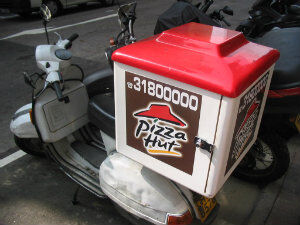

In addition, foreign brands must work to develop the trust of the people who will tend to select local products that they are already familiar with. Finally, cultural nuances and communication styles can make it difficult to craft effective marketing messages that are appealing, rather than offensive or confusing. Religious views, morals and even a sense of what is funny or crude will vary from culture to culture.
Since international marketing is so complex, marketers can turn to big data to help them get to know a population and better reach the needs of an international audience.
Pizza Hut Example
As one of the largest pizza chains in the world, Pizza Hut has some experience in the international arena. In fact, the chain has more than 12,500 restaurants in 91 countries. In the chain’s most recent efforts to boost profits, it has started gathering data about its customer’s preferences and then breaks down its customer base into clusters and microclusters based on the consumer’s purchasing habits, characteristics and other behaviors. These micro-groups can then be targeted with specific engagement programs across channels, such as in the Pizza Hut restaurants or the chain’s website.
The chain’s website was adapted so that it offers users a different experience depending on where they are located, whether they are on a desktop or mobile device and individual behaviors, such as previous purchases or views. Just one aspect that changes is the top five pizzas ordered in a particular area.
Has big data been effective for Pizza Hut? The program has not been implemented in every international market yet, but so far the company has seen a 200 percent increase in its campaign hit rates, a 38 percent increase in customer retention and a 6 percent increase in sales generated each month. The changes to the website, in particular, has increased the number of pages clicked on per site visit by 75 percent and increased reservations by 30 percent.
These numbers certainly make a good case study for businesses considering using big data to help them understand and work with an international market.
Big Data Applications
Pizza hut demonstrated one use for big data in an international market– segmenting populations in order to cater marketing messages and websites to a particular audience– but there are many more applications big data could be used for.
1. Cross-Selling
Consumer data on purchase history, preferences and demographics can all be used to cross-sell and increase an overall purchase. For example, many retailers have started providing product recommendations based off of previous purchases. This data could also be used to create promotions catered to bundled products. Overall, basing recommendations off of behavior will give marketers a much better idea of cultural values than trying to guess which products will be most appealing.
2. In-Store Analysis
Tracking consumer behavior isn’t limited to a website. Technology allows retailers to draw data from smartphones, devices connected to shopping carts or even image analysis through security cameras to see where consumers tend to go and spend the most time in their stores. This data could then be used to adjust layout and product mix based on what works and what doesn’t in a particular country or culture
3. Consumer Sentiment Analysis
Wouldn’t it be nice to adjust a campaign in real time based on its effectiveness with a particular international audience? With a big data services, you can. By collecting and analyzing all of the data available via social media and other channels, businesses can adjust their campaigns to use the messages that are most effective with a particular audience and quickly remove those that receive a poor response.
These are just a couple examples of how big data could help businesses work with an international market. What other roles do you see big data playing in the international arena?